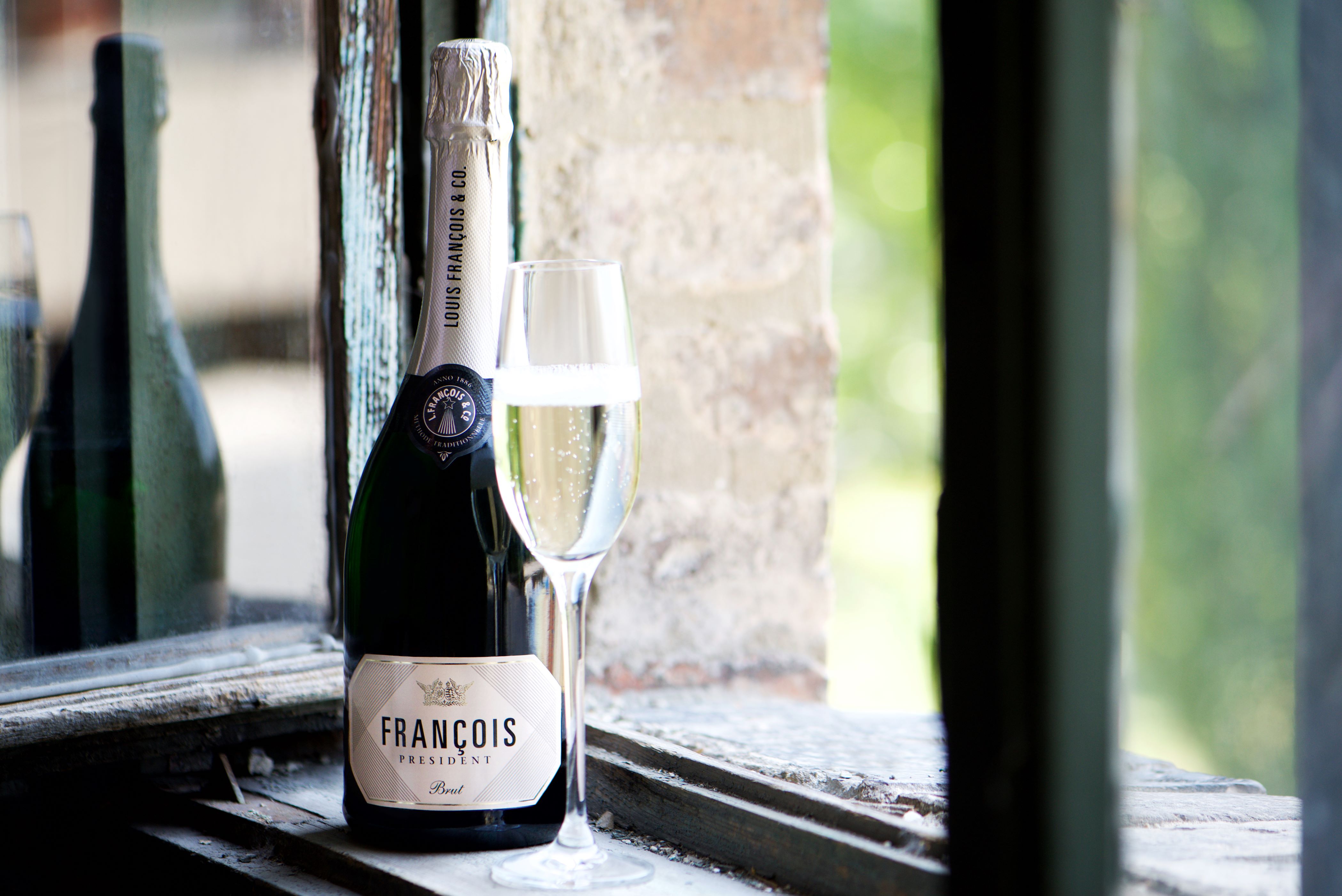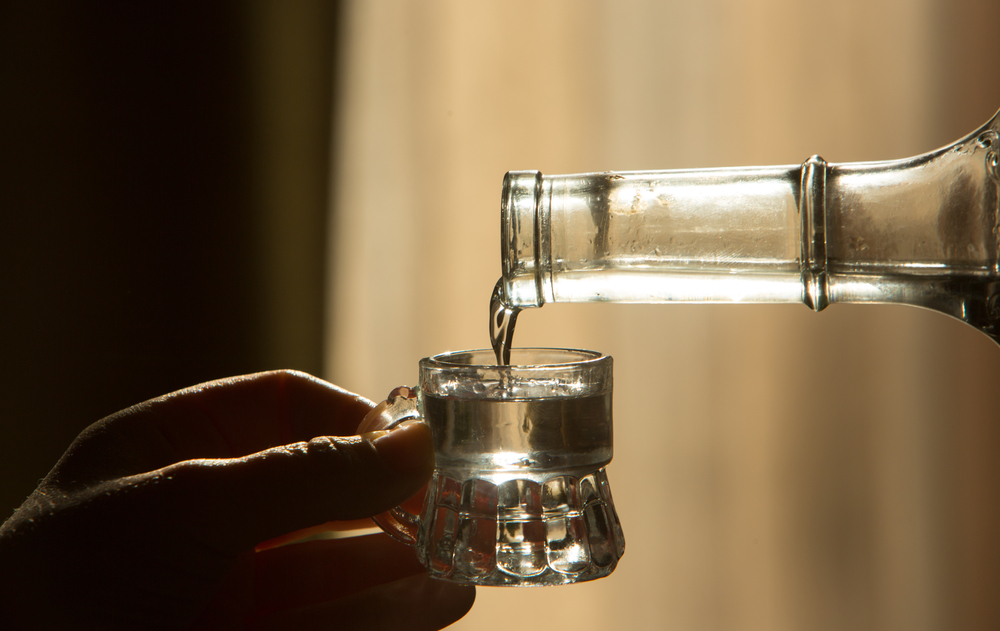Off the Beaten Track and Well Beyond

The Tokaj Wine Region and its Historic Cultural Landscape is a UNESCO World Heritage Site.
Photo by Andocs / Shutterstock.com
In my last column, I reported on the marvelous marketing savvy of Mád’s Mad winery from the Tokaj region, with cutting-edge information-providing smart chip technology installed in the label of one of its wines. Nevertheless, it can also be reassuring to uncover a gem that seemingly doesn’t have a clue about how to get its message out to the public.
In the Tokaj village of Táylla (224 km northeast of Budapest by road), the Szent Benedek winery very much flies under the radar, but its wines ought not to. Guiding visitors on a trip to the winery earlier this summer provided a unique opportunity to gain insight into this lesser-known cellar.
After a tour of the bijou but atmospheric cellar, which is covered in the benign white mold that is believed to keep the air clean, winemaker József Ádám brought wines up in a plastic bucket. He is a real believer in the Hárslevelű grape, and it is the dominant variety in the estate blend.
The single varietal and single-vineyard dry wines that are currently available date all the way back to the 2011 vintage. It is a great and rare thing to be able to taste older vintages as we don’t yet have much experience of how grapes like Furmint and Hárslevelű develop with age, given that the history of making top-notch dry wines from then is barely a two-decade story in the case of the former, and even less in the case of the latter. For its part, Furmint can be sharp and uninteresting as a young wine.
Ádám speaks of the importance of the “place of growth” and points up to the elevated, volcanic rock-based, and south-facing Nyírjes dűlő (vineyard) from which the 2011 dry Hárslevelű comes; this is the highest place where Szent Benedek has grapes.

Incredibly Complex
The 2011 Hárslevelű Nyírjes dűlő is oily, waxy, and honeyed, with edgy stoniness but also generous tropical fruit (pineapple) and eastern spices. It is incredibly complex and long. It not only tasted great as the church bells chimed in Tállya, but it also stood up nicely in the cool light of day later when I tried it in the less romantic setting of home a week or so later. It is excellent value at HUF 4,200 from borterasz.hu.
The 2011 Furmint is textured and quite Burgundian in character, with a pleasant touch of oak, and is also an excellent wine, but the Nyírjes dűlő Hárslevelű is more complex, reflecting the grape’s remarkable ability to age. Hárslevelű, which accounts for almost a third of Tokaj’s plantings, should be considered every bit the equal of Furmint (which makes up two-thirds of Tokaj’s vines) in the making of dry wines. Indeed, certain leading Hungarian sommeliers quip that “the best Furmint is Hárslevelű.”
For a light, refreshing, and organically-grown take on the Hárslevelű grape, ideal for summer imbibing, Gróf Degenfeld’s fresh, fruity and floral Hárslevelű (Bio) 2021 is a good choice. It was fermented and aged in the tank to preserve its freshness and costs HUF 2,950 from Bortársaság.
Also, from the Tokaj village of Tarcal, Kikelet winery’s Stephanie Berecz is another great lover of “Hárs” (pronounced “harsh”) as she often calls the grape, making single-vineyard offerings from the variety: her wines are anything but harsh.
Benedek’s sweet wines are also outstanding. 2014 was an extremely challenging vintage for dry wines, but it worked out well for sweet wines. “Tokaj Guide” editor Gergely Ripka recently told me he was impressed with the cellar’s 2014 sweets.
Hungarian Surprise
On a side note, having time to kill around Battersea Power Station before a recent flight back to Budapest from London Gatwick, I happened upon a wine bar, Vagabond Wines, with a selection of wines by the glass, including in mini-tasting portions, which are excellent for getting acquainted with many different wines. Among them, much to my surprise, were several Hungarian wines. There’s even a Hungarian waitress working there.
One of them was a 2019 Orange wine from Etyeki kúria’s MSP series (MSP stands for Merész Sándor project, which enables winemaker Sándor Merész to flex his winemaking wings). This was made from the Pinot Gris grape, fermented on the skins for 14 days, and aged for 10 months in a mix of old (2,000-liter) and new (300-liter) Hungarian barrels. The wine is both unfiltered and unfined at bottling.
I thought the MSP range of wines was only available at the winery, so I was surprised to find them in this cool London wine bar. It is also an urban winery, and the winemaking equipment, such as a pneumatic press and tanks, can be seen towards the back of the bar. Incidentally, wines made from Zenit, a Hungarian variety, are also doing well in the United Kingdom at present.
English wine itself is enjoying exciting times as plantings increase, and even renowned Champagne houses have been setting up shop in the south of the country. Bortársaság has started selling several of the classy and multiple award-winning Nyetimber traditional-method sparkling wines. In a recent blind tasting, many of us were mightily impressed by a vintage Nyetimber that had most of us thinking it was fine champagne.
Incidentally, you’ll have to wait until September 2023 to try the next vintage of the MSP Orange wine. In the meantime, the Sauvignon Blanc, for which Etyeki kúria is better known, will delightfully quench summer thirst with its fresh acidity and elegant green aromas and flavors. The 2021 vintage costs HUF 2,490 from Bortársaság.
This article was first published in the Budapest Business Journal print issue of July 15, 2022.
SUPPORT THE BUDAPEST BUSINESS JOURNAL
Producing journalism that is worthy of the name is a costly business. For 27 years, the publishers, editors and reporters of the Budapest Business Journal have striven to bring you business news that works, information that you can trust, that is factual, accurate and presented without fear or favor.
Newspaper organizations across the globe have struggled to find a business model that allows them to continue to excel, without compromising their ability to perform. Most recently, some have experimented with the idea of involving their most important stakeholders, their readers.
We would like to offer that same opportunity to our readers. We would like to invite you to help us deliver the quality business journalism you require. Hit our Support the BBJ button and you can choose the how much and how often you send us your contributions.








